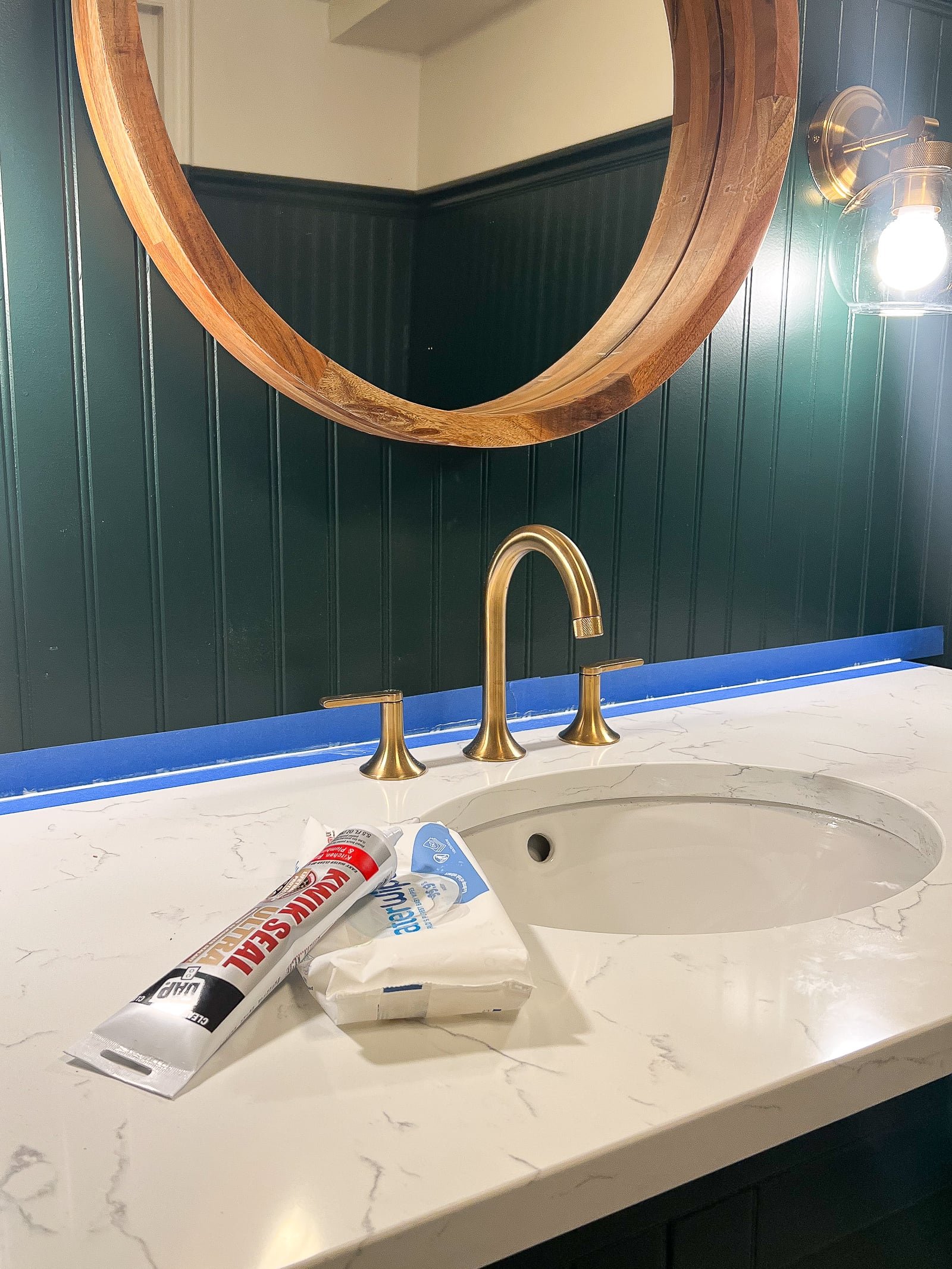Welcome to caulk 101! I’m sharing my best caulking tips for a job well done. What to use, when to use it, and tricks to apply caulk with ease.
Most DIY projects I tackle involve caulk, and whenever I share myself using this essential supply, I’m bombarded with questions.
What type of caulk should you use? When do you need it? Any caulking tips for straight lines and a professional-looking finish? Can you apply new caulk over old caulk? What’s the difference between silicone sealant and acrylic caulk?
It’s about time I dedicated an entire blog post to caulking best practices so you can confidently tackle your next home improvement project.
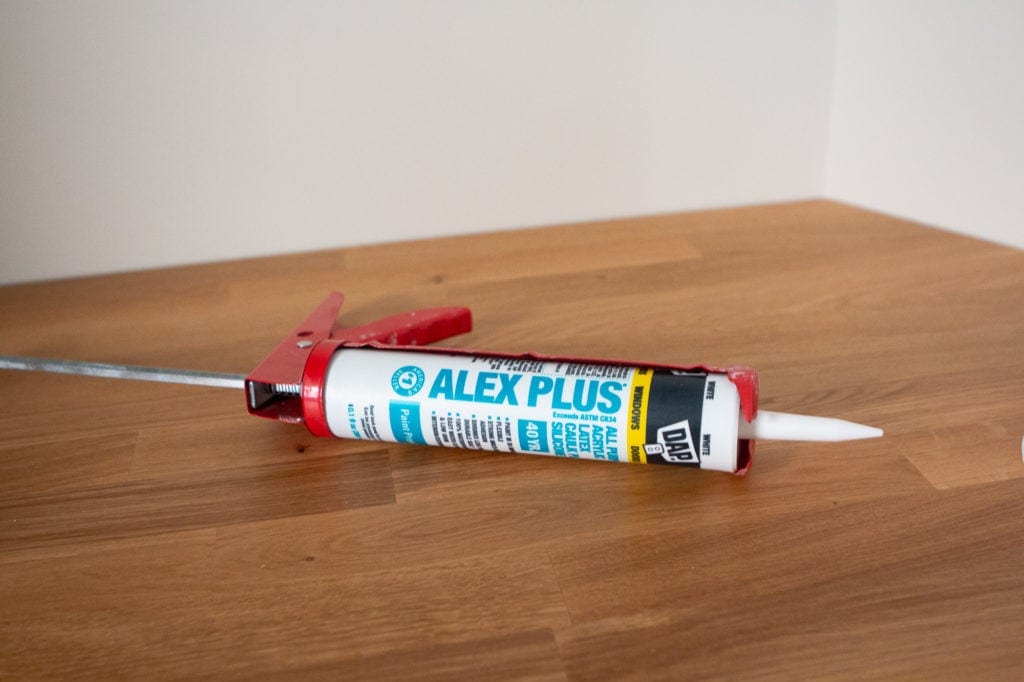
And yes, we’re just gonna have to get over the fact that I’m going to say the word “caulk” about 100 times during this post. I posted this video on TikTok and was bombarded with comments from silly men who thought it was hilarious that I said this word so many times. Ugh.
Let’s get over the misogyny and learn more about this DIY essential!
What Is Caulk & When Should You Use It?
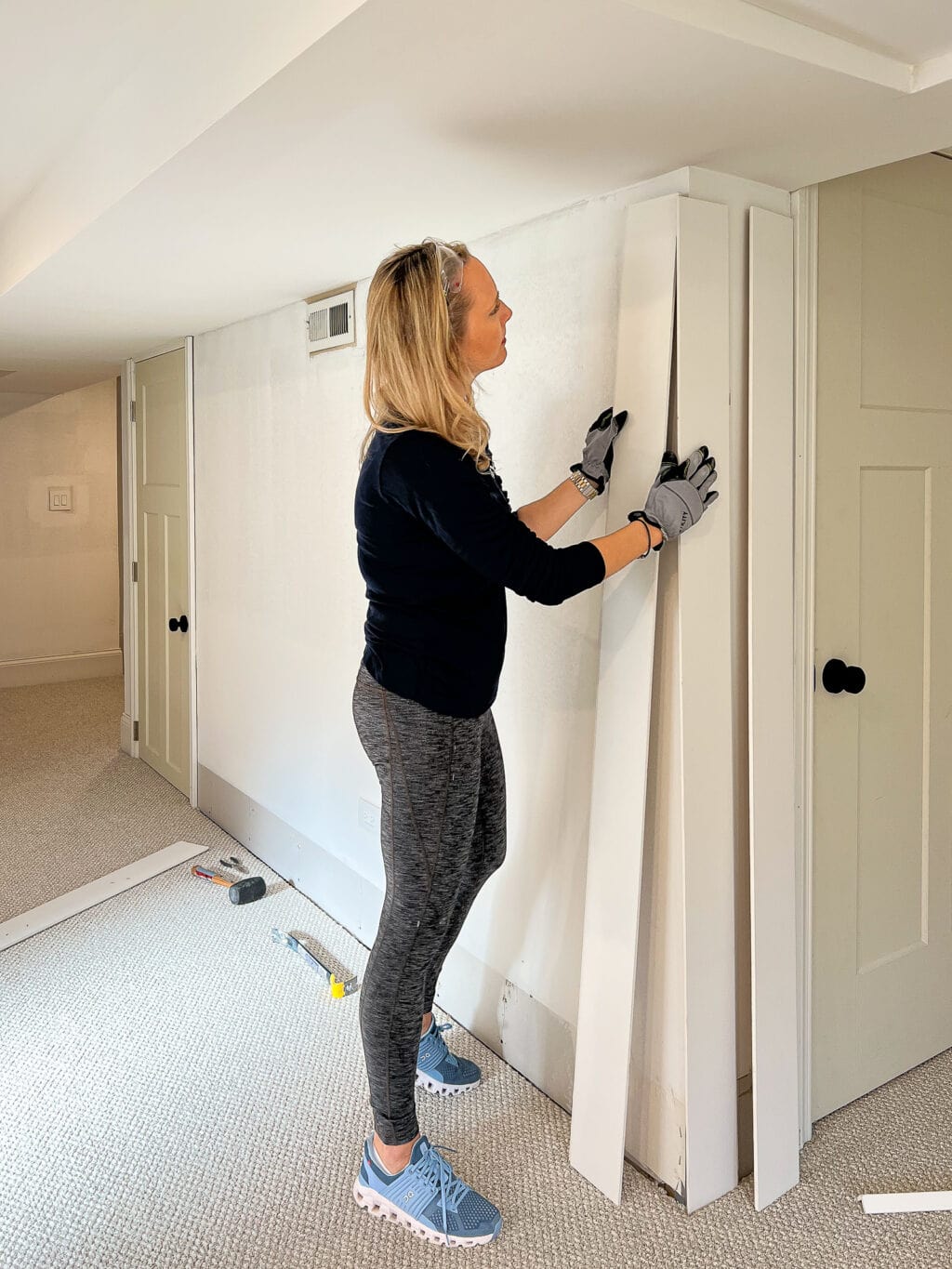
Caulk is a flexible material used to seal cracks and gaps between building materials like wood, tile, masonry, concrete, windows, and doors. It prevents moisture, dirt, and debris from getting into joints, which helps avoid mold, mildew, and water damage. You’ll most often see it used in showers, kitchens, and exterior projects, but it’s just as crucial for woodworking and trim projects inside your home.
Caulk typically comes in a tube and is applied using a caulk gun to fill joints and gaps.
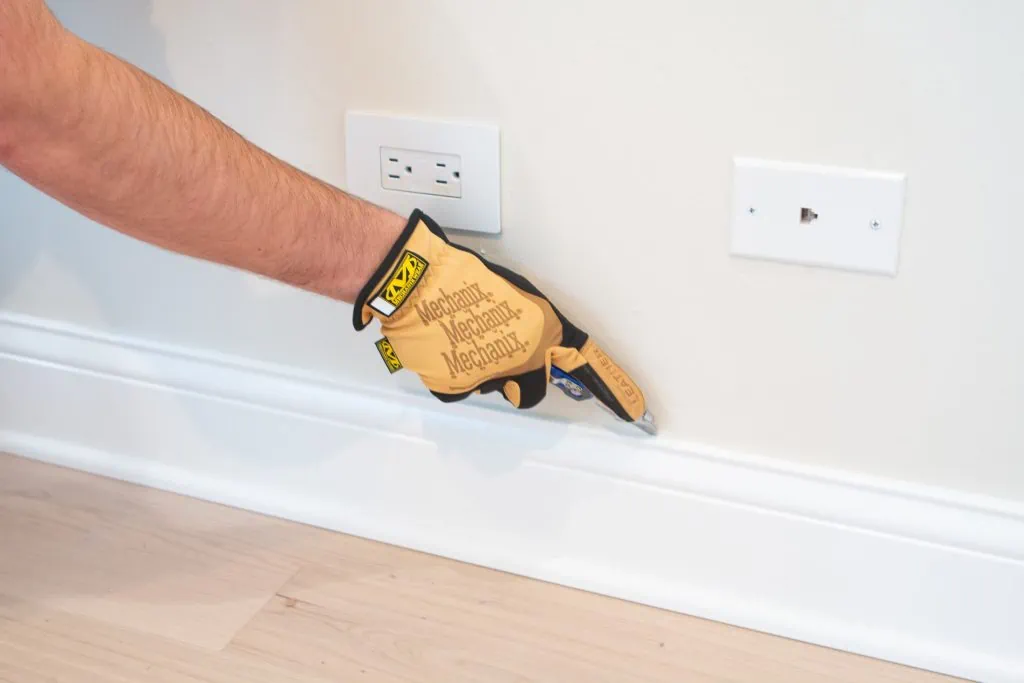
If you live in a colder climate, you may notice cracks and gaps appearing around your baseboards, doors, and windows due to temperature and humidity changes. This happens because homes are always shifting and settling. The best fix for these gaps? Caulk!
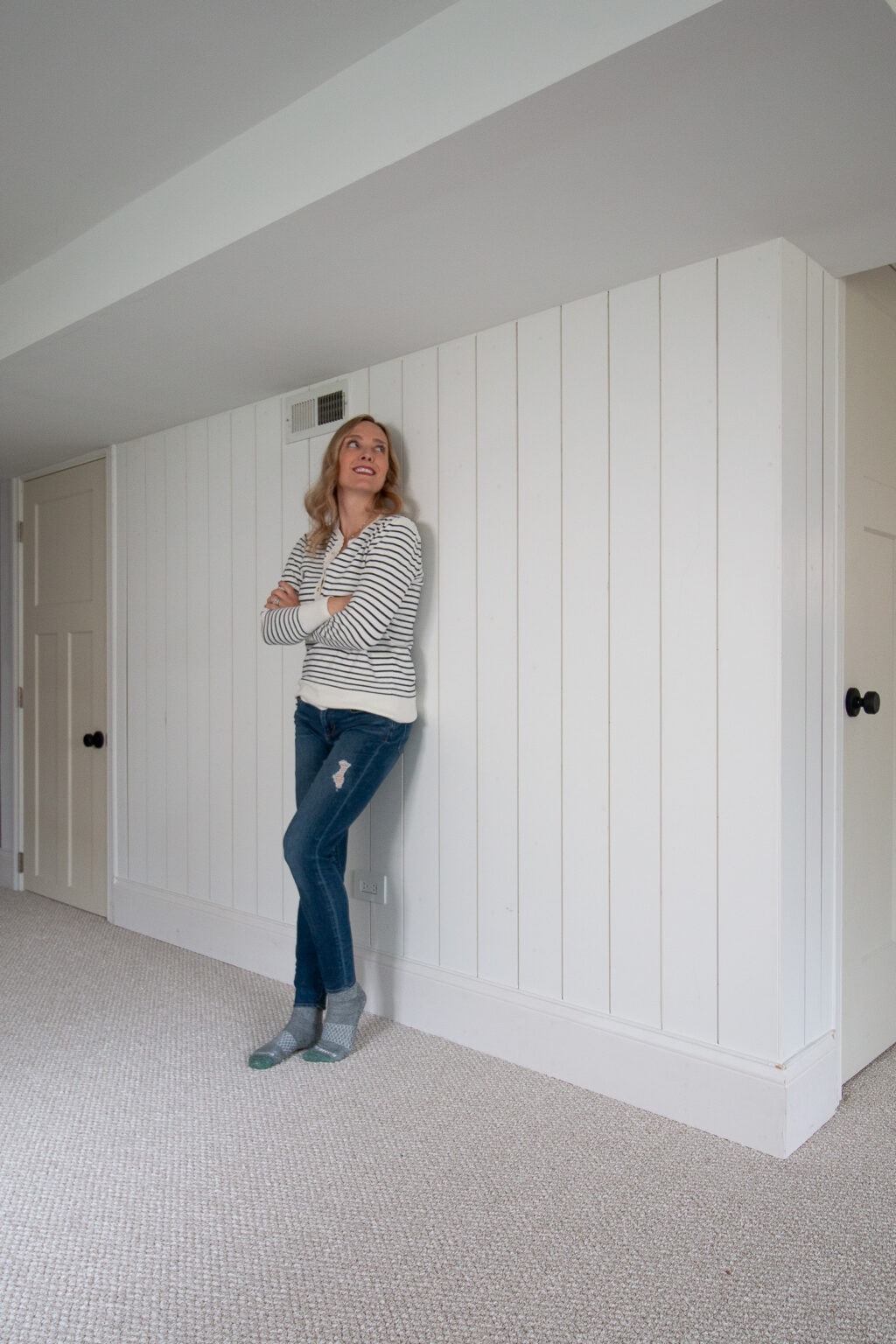
But it’s also essential for new DIY projects. If you’re installing trim, shiplap, or baseboards, you’ll want to caulk joints where wood pieces meet to create a seamless look. I always say, “Caulk will save me” because if I make a cut that isn’t perfect, a bead of caulk and some paint will hide the mistake!

It’s like magic!
Silicone Caulk vs. Acrylic Latex Caulk
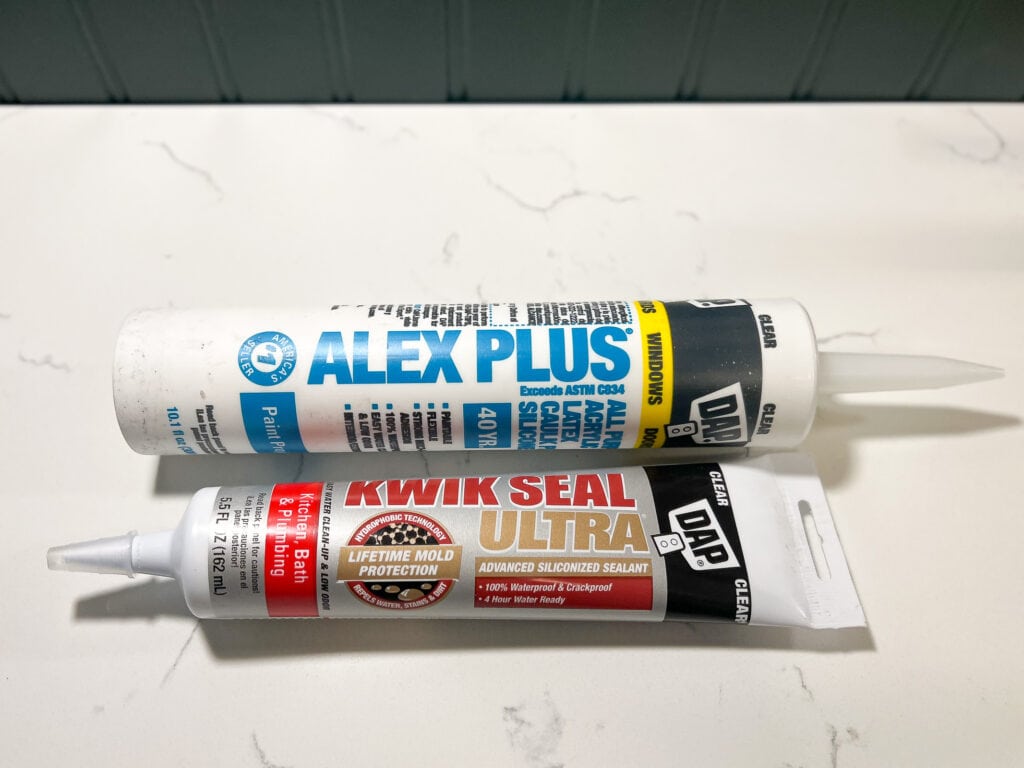
There are different types of caulk, but the two most common are acrylic latex caulk and silicone sealant.
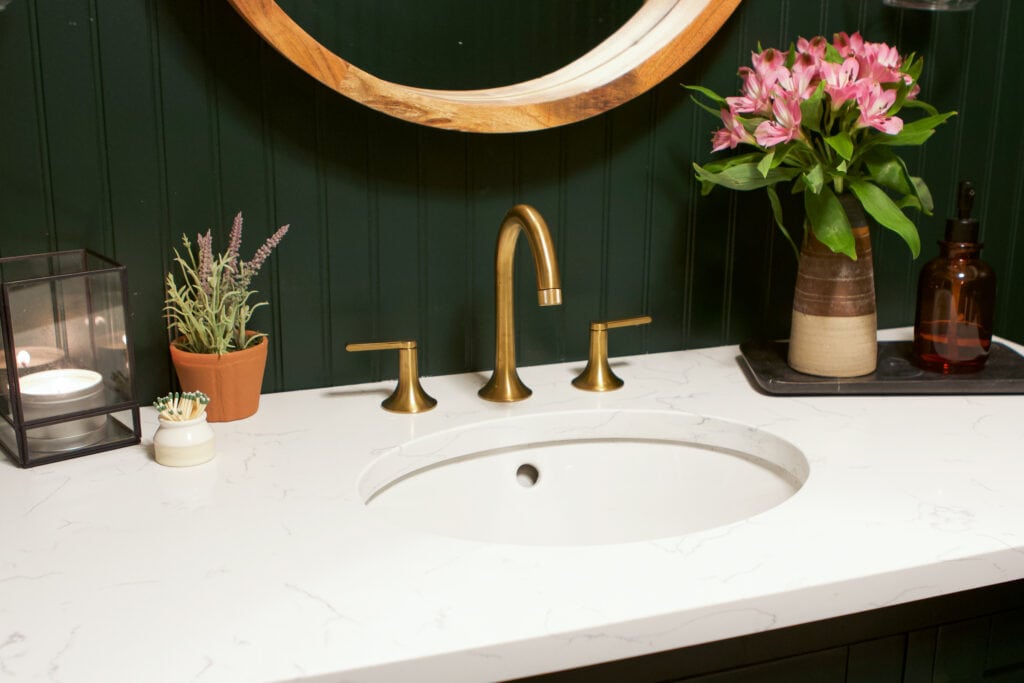
Silicone Caulk: It’s best for showers, bathtubs, kitchens, and exterior projects because it creates a waterproof seal that prevents leaks and water damage. Here’s a tutorial for a kitchen backsplash and another to re-caulk your bathtub. Silicone caulk is not paintable, but it comes in various colors, along with clear. It is harder to work with than acrylic, and it can get messy!
Acrylic Latex Caulk: The best choice for woodwork, like baseboards, crown molding, and window trim. This type is paintable, so you can get a seamless finish.
Caulking Supplies
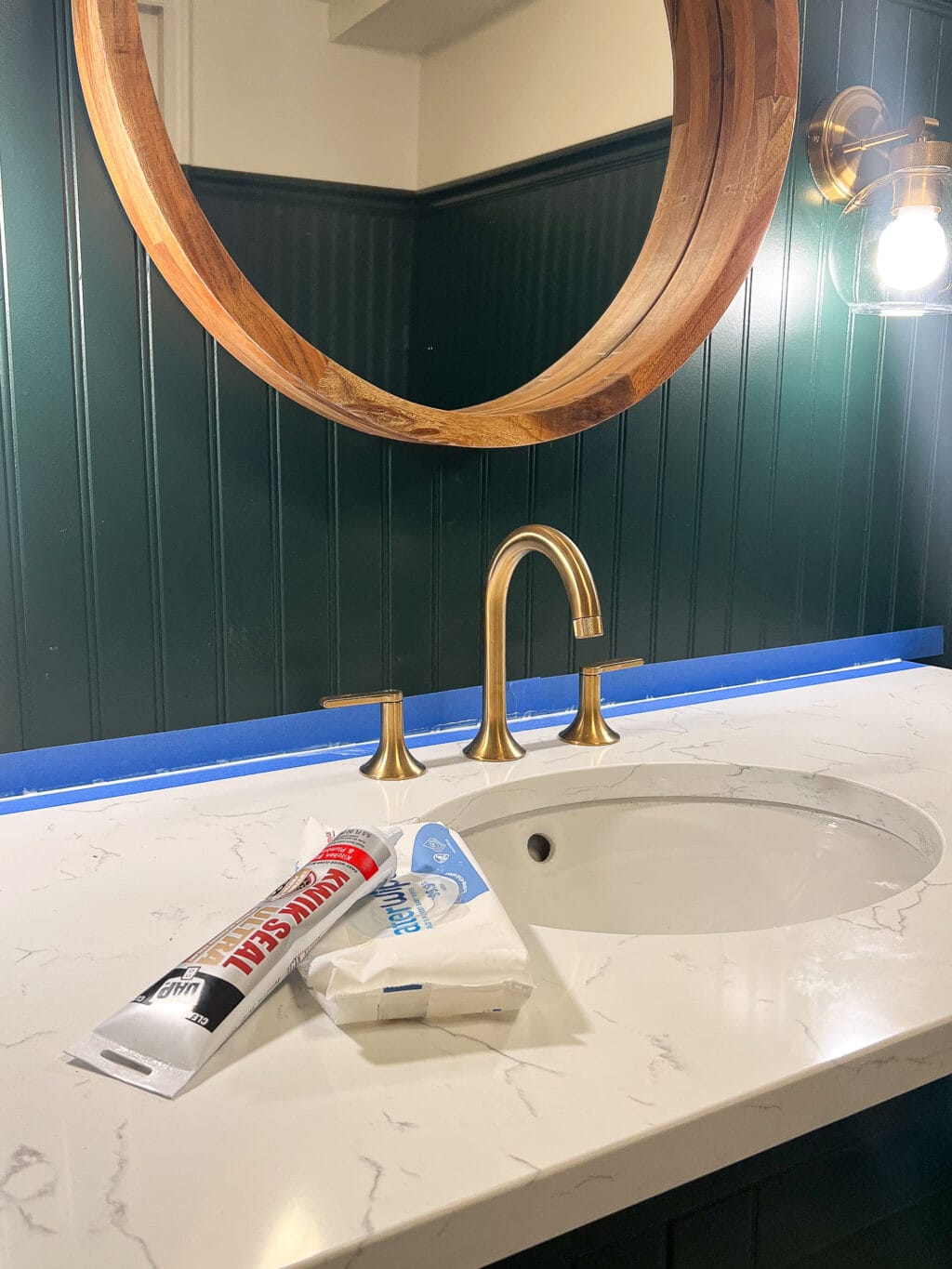
If you’re going to do a caulking project, here are a few things you might want to have on hand…
Caulk 101: My Best Application Tips
Here are my best tips to get a professional finish and clean lines every time.
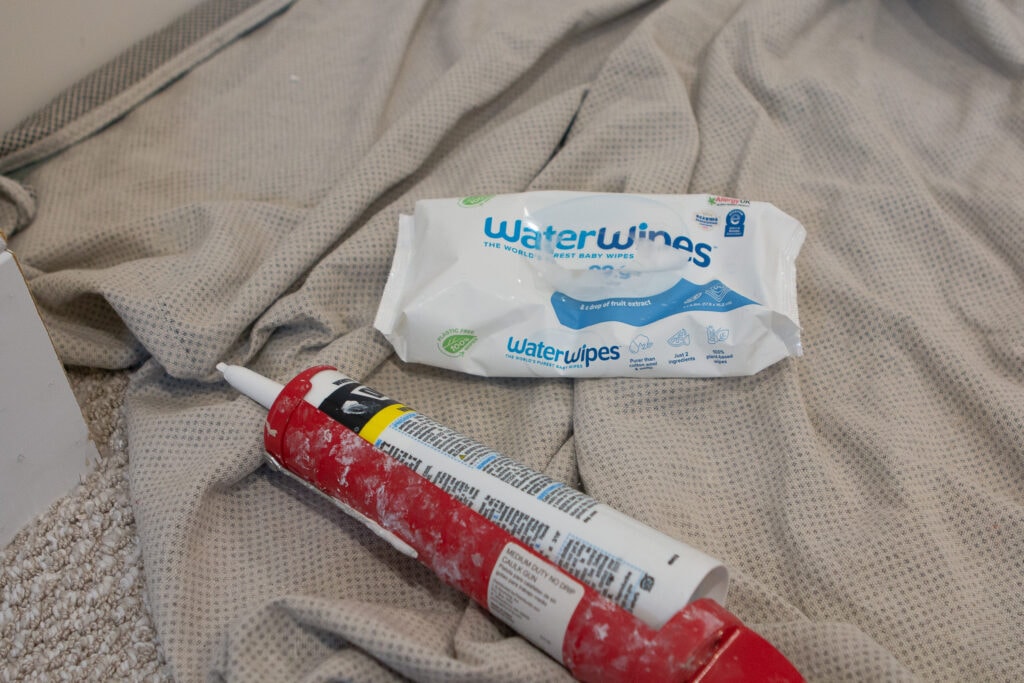
- Pierce the tube: Some caulk tubes need to be pierced inside the nozzle to open them. You can use the caulking gun for this as it has a pointy thing on it, and you just stick that in the hole to break the seal of the tube.
- Cut the tip of the nozzle: Most caulk guns have a built-in cutter to cut the tip of the caulk tube. It’s the little hole right by the trigger. Put the caulk tip in there, clamp it down, and it cuts it for you! No scissors are needed.
- Cut the nozzle correctly: If you look closely, there are measurements right on the nozzle of most brands of caulk based on how thick you want your caulk line to be. I like to cut to the 1/4-inch mark and cut at a 45-degree angle.
- Use baby wipes: They are my secret weapon when it comes to caulking. I work in three to five-foot sections and keep the caulk gun moving while I place a finger with a baby wipe right behind that bead of caulk. The baby wipe smooths it down, and the wetness prevents the caulk from pulling up or sticking to you. It also picks up any excess caulk.
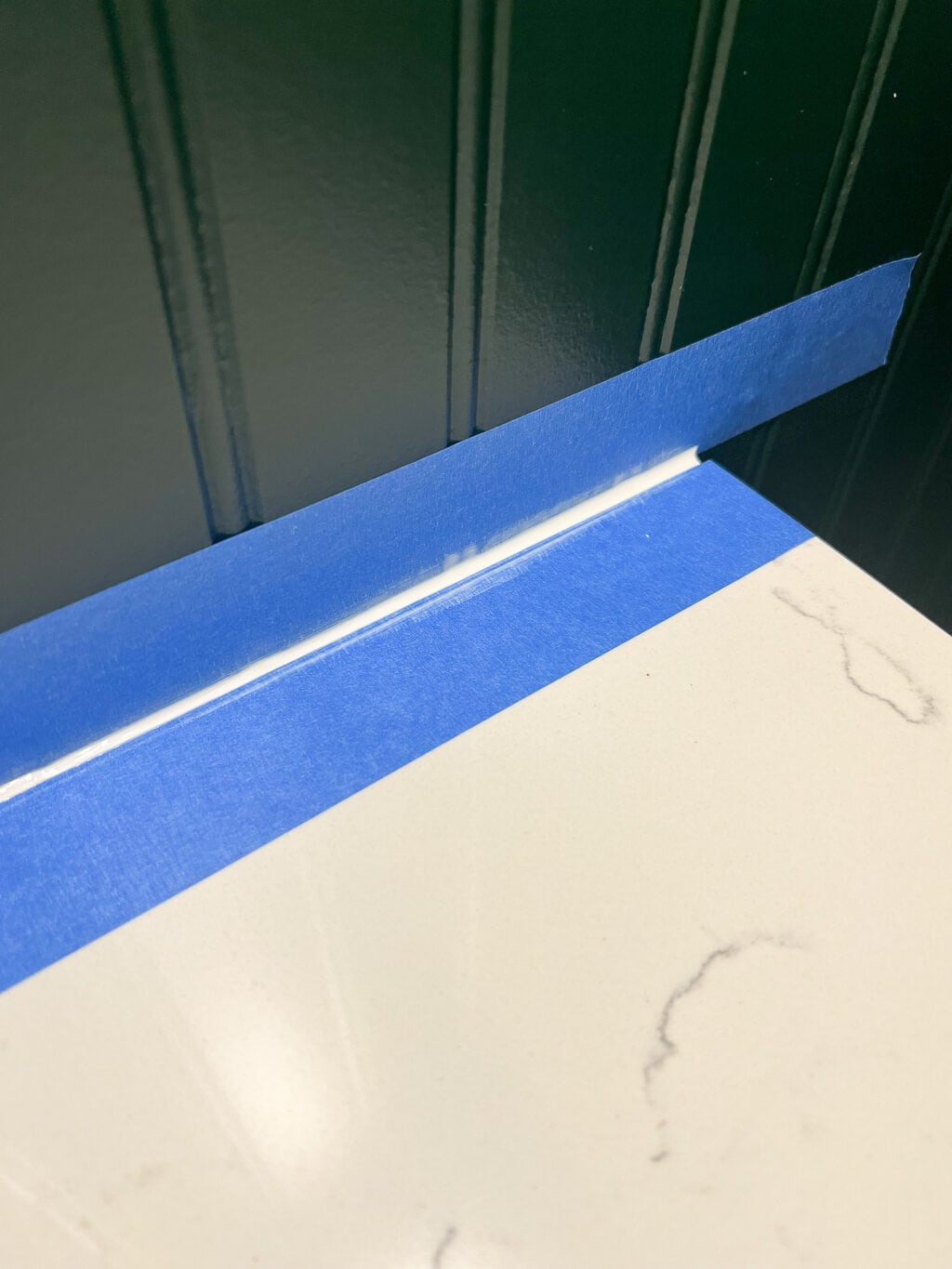
- For silicone, use blue painter’s tape: If you’re using silicone caulk, you will want to use painter’s tape. Apply it above and below the area you need to caulk. Apply the caulk with steady pressure, smooth it with a baby wipe, and remove the painter’s tape immediately for crisp lines. If you wait too long, it may peel the caulk up right along with it.
Quick FAQs About Caulk
Can you caulk over grout?

One of the biggest mistakes I see is using grout where two surfaces meet—like corners, where the tub meets the tile, or where the backsplash meets the countertop. These are areas that are always shifting, and the grout will inevitably crumble! Instead, you need to use caulk because it’s a flexible material.
Remove the old grout and scrape it away as I show in this tutorial. Then, if it’s a bathroom or kitchen, use silicone caulk to replace the grout. So, nope, don’t ever caulk over grout!
What caulk should you use when tiling?
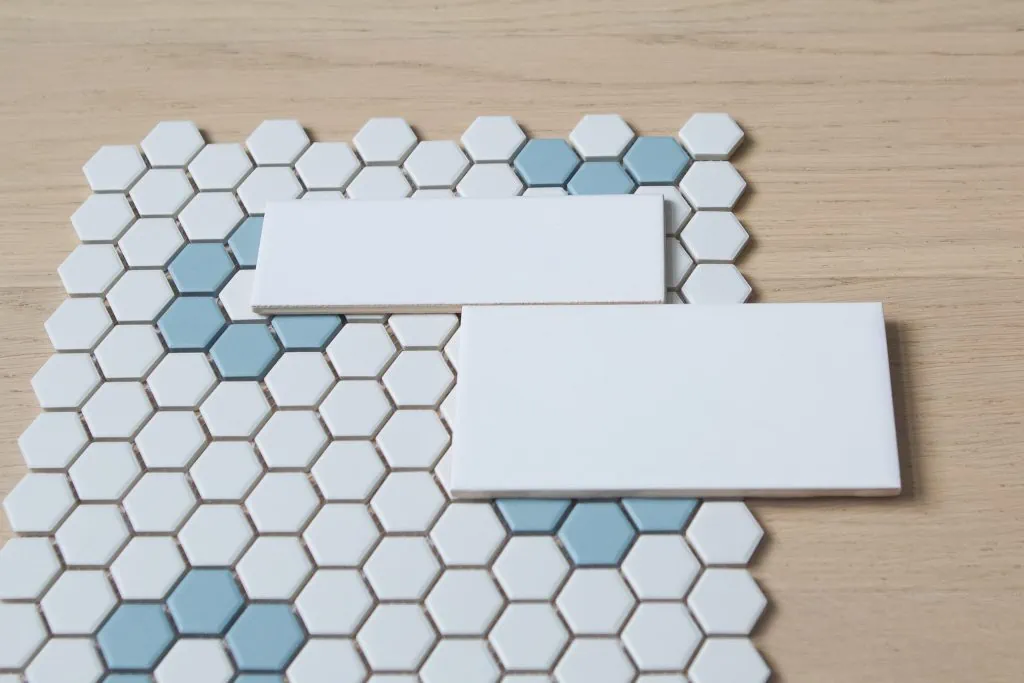
You will likely want to use silicone caulk that matches the color of your grout. Most tile stores carry a wide variety of caulk colors to match your grout. They even sell it in sanded and unsanded versions, so you can match the look of the grout exactly! For example, if you’re tiling a bathroom floor, you would want to use caulk on the edges of the bathroom where it meets the wall, tub, vanity, toilet, etc.
How long will an open tube last?
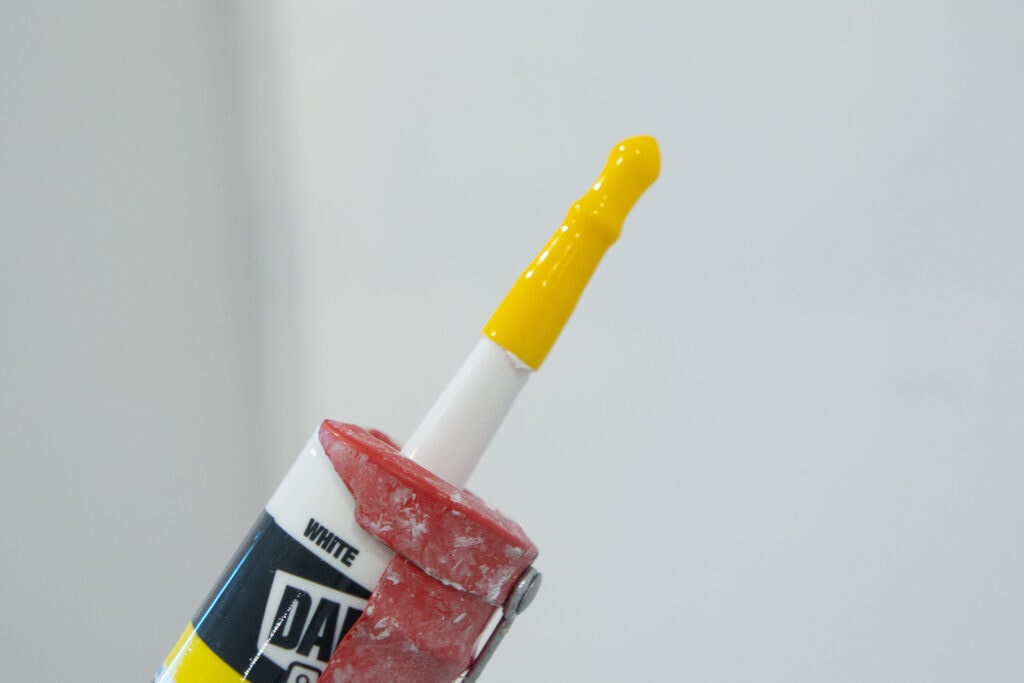
I highly recommend getting these caulk caps to save your opened caulk. I like having an opened tube of acrylic latex caulk on hand so I can easily make touch-ups around the house. I’ve had opened tubes last for more than six months with the use of these $3 caps!
Do you need to caulk where the baseboard meets the floor?
I usually don’t, but if there are noticeable gaps, you can. I prefer to caulk the top of the baseboard where it meets the wall.
How can I recaulk a bathtub?
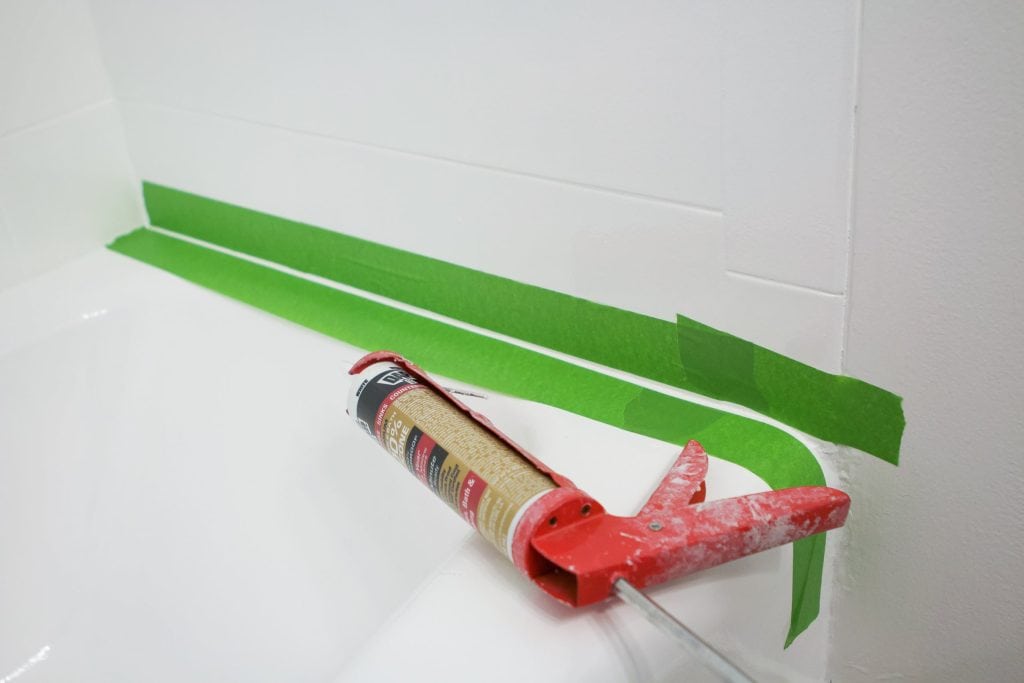
This blog post walks you through the full step-by-step for this easy DIY project!
When should I paint after caulking?
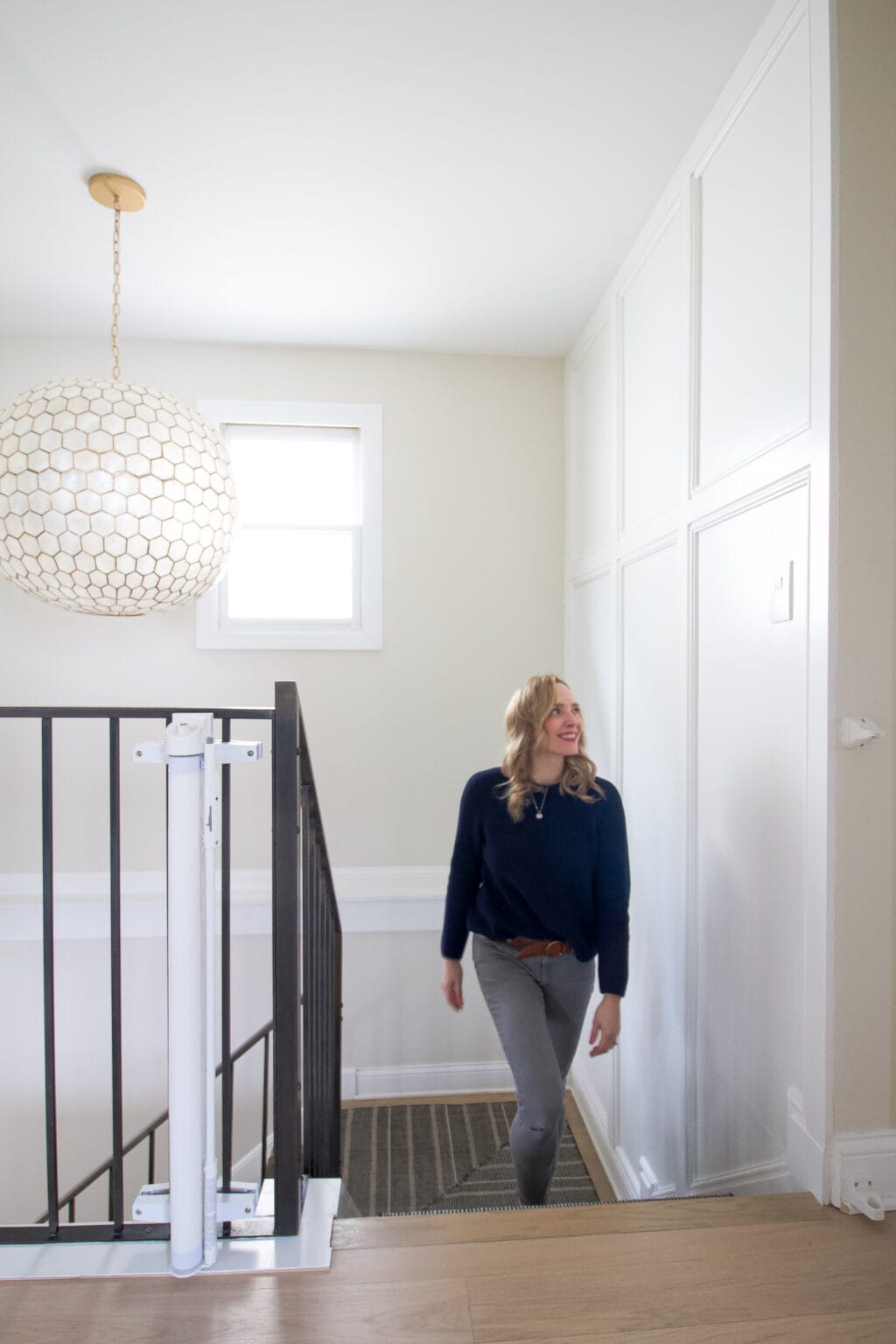
Read the instructions for your particular tube, but in general, I usually wait at least an hour.
Can you caulk over existing caulk?
When it comes to acrylic latex caulk, unless it’s in really bad shape, I usually just add more right on over. When it comes to silicone, I find it best to remove it first before applying fresh caulk.
What if I have a really big gap?
I swear by backer rod! You can jam this into the crevice and then caulk right over it, so the caulk has something to hold onto. Works like a charm.
Can caulk help with drafty windows and doors?
Yes! It can be used to seal indoor air leaks and prevent cold drafts from getting into your house.
Go Forth & Caulk!

I hope this Caulk 101 guide helps you feel more confident tackling home improvement projects that require caulking. Whether you’re sealing cracks, recaulking your shower, or finishing a trim project, using the right caulk with the proper technique will give you the best results. Let me know if you give it a try!
